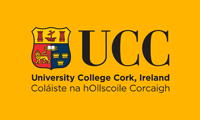News
Actifensin And Nisin J

Actifensin And Nisin J
Bacteriocins Found In Sheep Poo And On Human Skin
Julie O’Sullivan and Ivan Sugrue in the Microbes to Molecules group led by Paul Ross and Colin Hill, have added to APC’s arsenal of new antimicrobials with discoveries of Nisin J, a new antimicrobial produced from staphylococcal bacteria found on human skin and in actifensins produced by Actinomycetes isolated from sheep faeces.
They have published 2 papers in the well-known microbiology journal, Journal of Bacteriology, where their paper identifying new antimicrobials in actifensin was highlighted by the editor as an article of significant interest.
These latest antimicrobials fall into a class of small antimicrobial proteins called bacteriocins which represent versatile alternatives to some commonly used antibiotics.
Nisin J, which was isolated from Staphylococcus capitis, a strain of bacteria often found between the human toes, is a type of nisin, commonly used in the Food industry as a preservative. Nisin has been used since 1952 and was granted generally regarded as safe (GRAS) status in 1988 by the US Food and Drug Administration FDA. It is also approved by the World Health Organisation as a food additive and has the E-number E234.
Nisin J has antimicrobial activity against a range of harmful gram-positive bacteria including the superbug MRSA and Cutibacterium acnes which causes acne. As such Nisin J and other bacteriocins could contribute to the reduction of antibiotic usage for skin infections. Nisin J is the first nisin to be isolated from a Staphyloccus species and the first produced from a bacterium found on human skin. It has eight amino acid changes compared to nisin A and is the longest nisin variant found to date; six of these substitutions are unique to Nisin J.
Actifensin is another new bacteriocin found in a strain of Actinomyces ruminicola isolated from sheep faeces. It is the first bacteriocin to be discovered that is produced by Actinomyces ruminicola. Actifensin has a broad range of antimicrobial activity against pathogens such as MRSA and vancomycin-resistant Enterococcus (VRE- pictured above). Peptides similar to this are known to be produced by higher organisms such as fungi, ticks and even oysters but it was not known that bacteria had such a potent defence mechanism.
Antimicrobial resistance poses one of the biggest threats to global health today. According to the United Nations, drug-resistant infections – caused by superbugs – result in about 700,000 deaths per year globally. Without effective antibiotics for the prevention and treatment of infections, many of the achievements of modern medicine such as organ transplantations, chemotherapy and surgeries such as caesarean sections become much more dangerous.
These latest antimicrobials form part of the APC’s overall strategy to develop precision biological tools to control harmful bacteria and as such provide efficacious alternatives to antibiotics for human and animal use.
The cover of the May issue of JBact features the predicted structure of actifensin; three highly conserved disulfide bridges are shown in yellow. (Background) Strong zones of inhibition against Lactobacillus delbrueckii subsp. bulgaricus indicative of actifensin production by colonies of Actinomyces ruminicola DPC 7226 isolated from the feces of a sheep in County Kerry, Ireland.
Full references:
Nisin J, a Novel Natural Nisin Variant, Is Produced by Staphylococcus capitis Sourced from the Human Skin Microbiota Julie N. O’Sullivan, Paula M. O’Connor, Mary C. Rea, Orla O’Sullivan, Calum J. Walsh, Brian, Healy, Harsh Mathur, Des Field, Colin hill & R. Paul Ross. (2020) J.Bacteriol. DOI: 10.1128/JB.00639-19
Actinomyces Produces Defensin-Like Bacteriocins (Actifensins) with a Highly Degenerate Structure and Broad Antimicrobial Activity Ivan Sugrue, Paul M. O’Connor, Colin Hill, Catherine Stanton and R. Paul Ross (2020) J. Bacteriol. DOI: 10.1128/JB.00529-19


